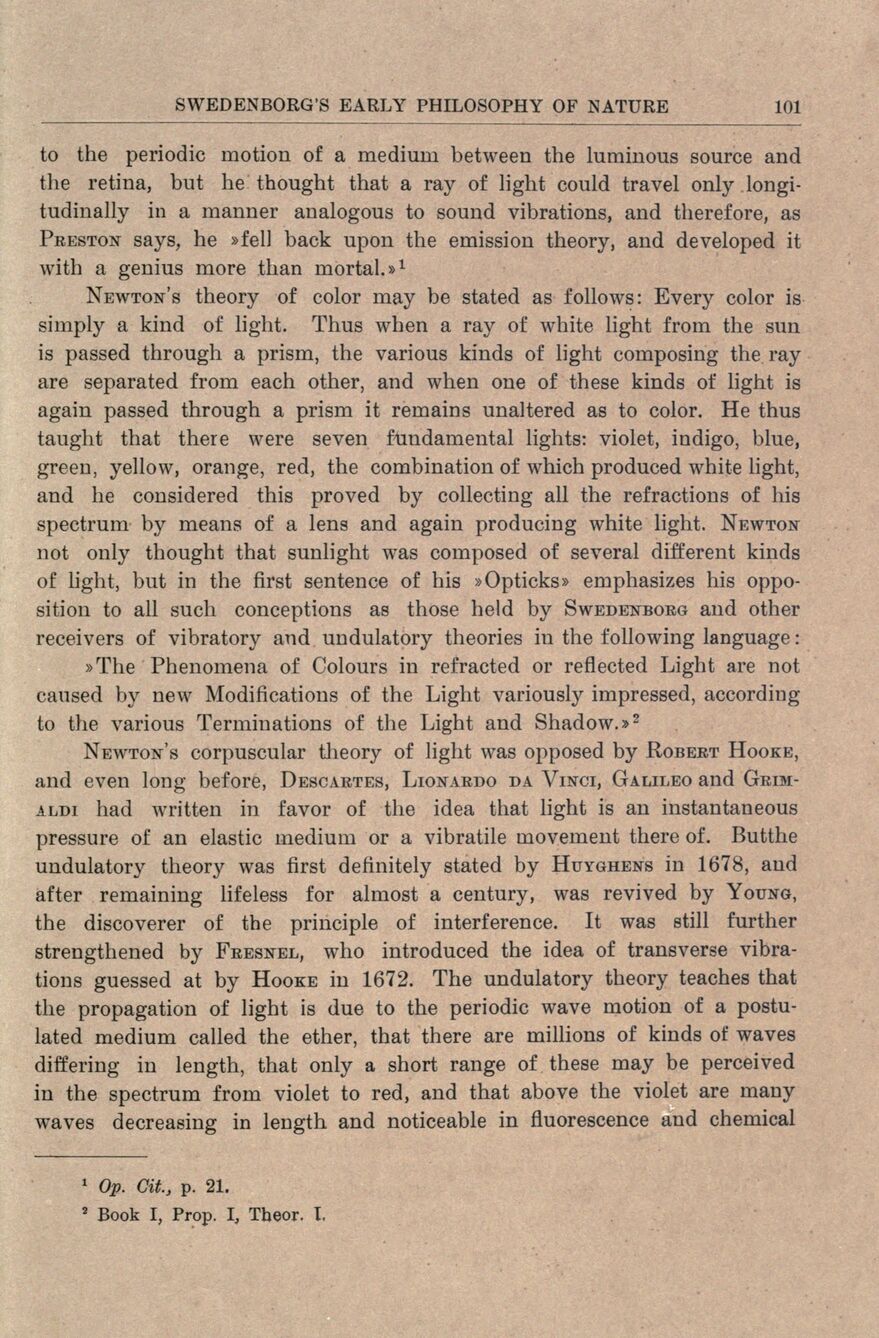
Full resolution (JPEG) - On this page / på denna sida - Sidor ...

<< prev. page << föreg. sida << >> nästa sida >> next page >>
Below is the raw OCR text
from the above scanned image.
Do you see an error? Proofread the page now!
Här nedan syns maskintolkade texten från faksimilbilden ovan.
Ser du något fel? Korrekturläs sidan nu!
This page has never been proofread. / Denna sida har aldrig korrekturlästs.
to the periodic motion of a medium between the luminous source and
the retina, but he thought that a ray of liglit could travel only
longi-tudinally in a manner analogous to sound vibrations, and therefore, as
Preston says, he »feli back upon the emission theory, and developed it
with a genius more tlian mortal.»1
Newton’s theory of color may be stated as follows: Every color is
simply a kind of liglit. Thus when a ray of white light from the sun
is passed through a prism, the various kinds of light composing the ray
are separated from each other, and when one of these kinds of light is
again passed through a prism it remains unaltered as to color. He thus
taught that there were seven fundamental lights: violet, indigo, blue,
green, yellow, orange, red, the combination of which produced white light,
and he considered this proved by collecting all the refractions of his
Spectrum by means of a lens and again producing white light. Newton
not only thought that sunlight was composed of several different kinds
of light, but in the first sentence of his »Opticks» emphasizes his
opposition to all sucli conceptions as those held by Swedenborg and other
receivers of vibratory and undulatory theories in the following language:
»The Phenomena of Colours in refracted or reflected Light are not
caused by new Modifications of the Light variously impressed, according
to the various Termiuations of the Light and Shadow.»2
Newton’s corpuscular theory of light was opposed by Robert Hooke,
and even long before, Descartes, Lionardo da Vinci, Galileo and
Grim-aldi had written in favor of the idea that light is an instantaneous
pressure of an elastic medium or a vibratile movement there of. Butthe
undulatory theory was first definitely stated by Huyghens in 1678, and
after remaining lifeless for almost a century, was revived by Young,
the discoverer of the principle of interference. It was still further
strengthened by Fresnel, who introduced the idea of trans verse
vibrations guessed at by Hooke in 1672. The undulatory theory teaches that
the propagation of light is due to the periodic wave motion of a
postulated medium called the ether, that there are millions of kinds of waves
differing in length, that only a short range of these may be perceived
in the Spectrum from violet to red, and that above the violet are many
waves decreasing in length and noticeable in fluorescence and Chemical
1 Op. Cit., p. 21.
2 Book I, Prop. I, Tbeor. I.
<< prev. page << föreg. sida << >> nästa sida >> next page >>